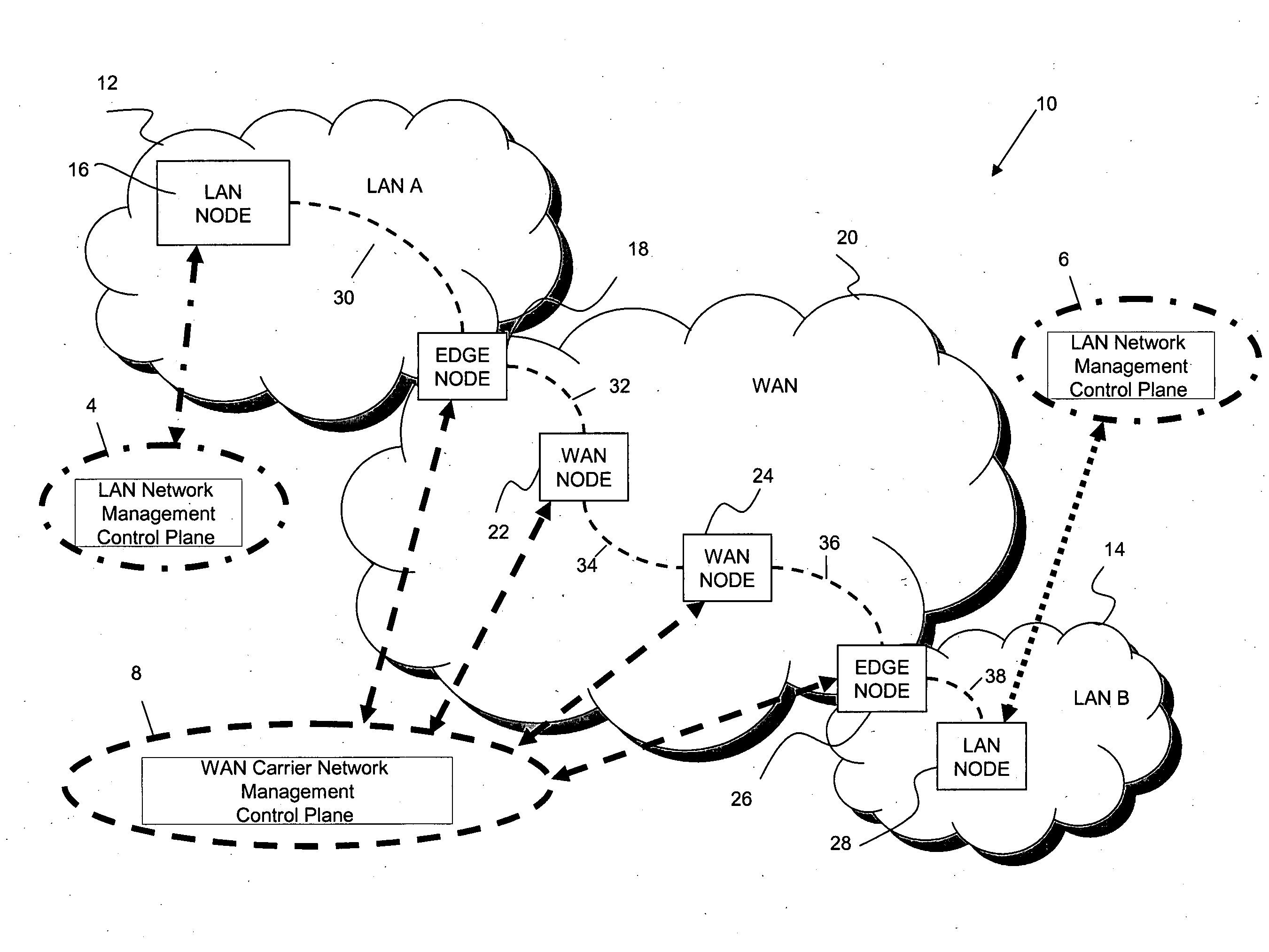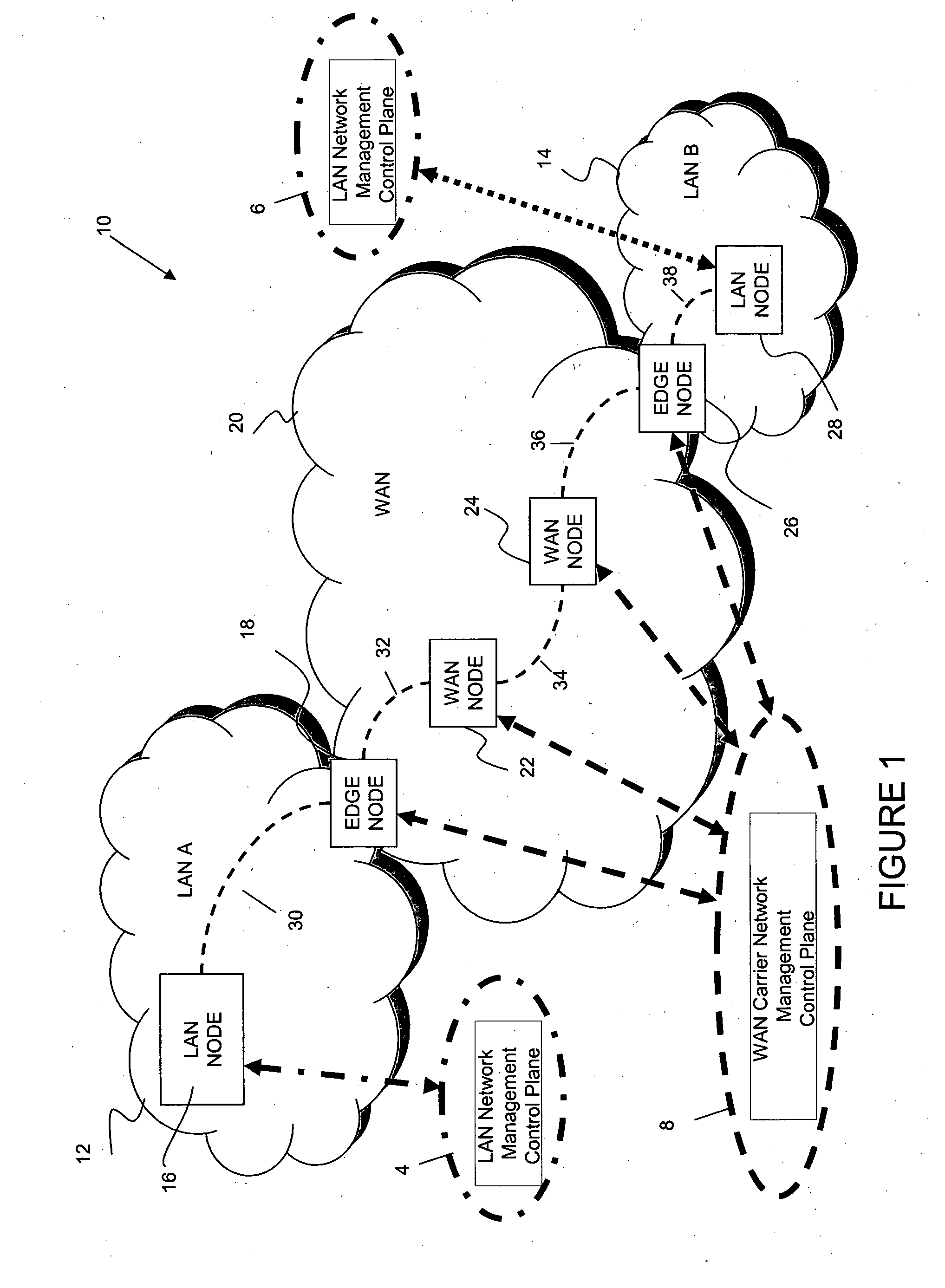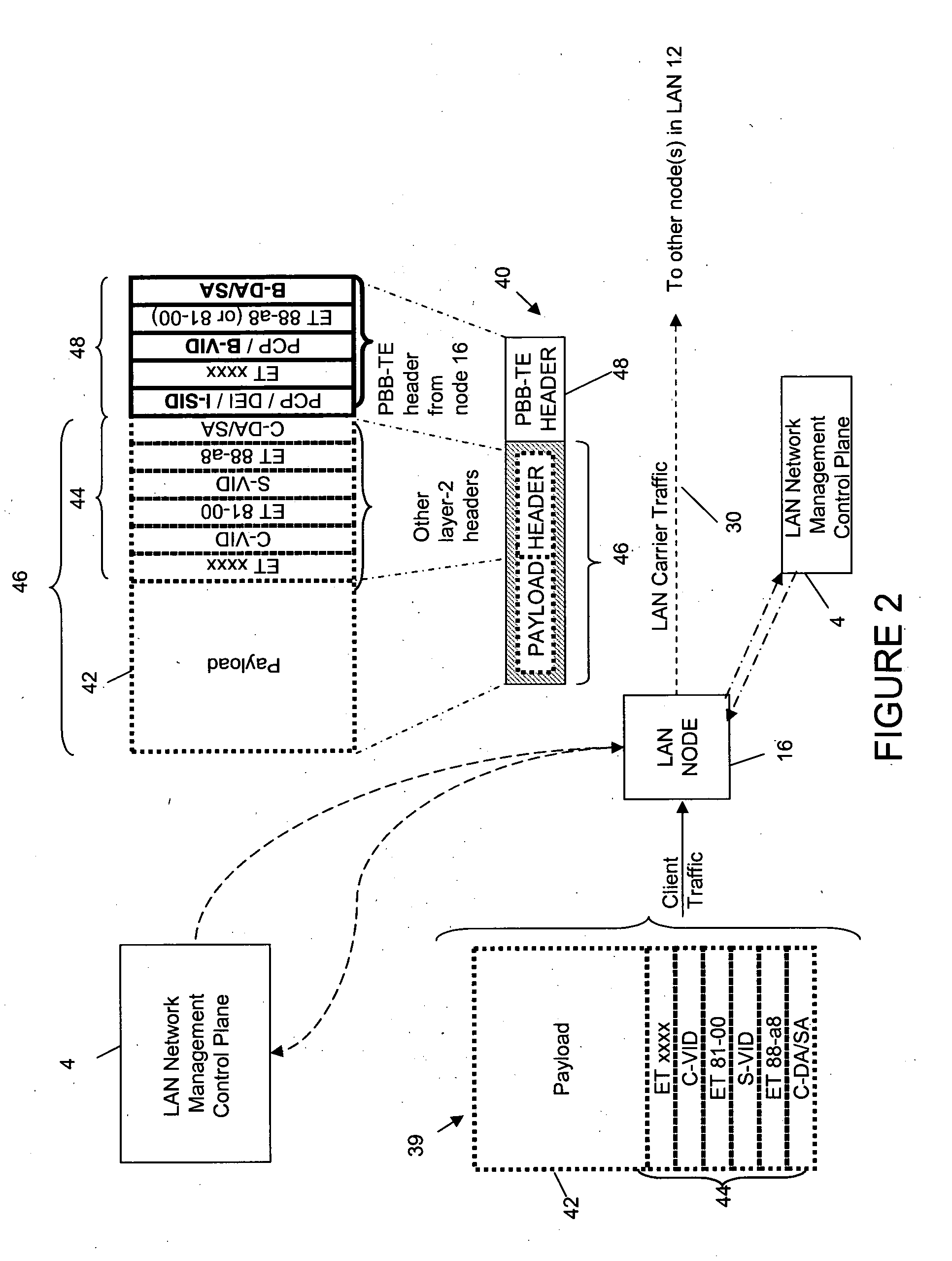Header compression scheme
a header and compression scheme technology, applied in the field of header compression scheme, can solve the problems of increasing bandwidth inefficiency, less efficient use of bandwidth, and inefficient carrying of ethern
- Summary
- Abstract
- Description
- Claims
- Application Information
AI Technical Summary
Benefits of technology
Problems solved by technology
Method used
Image
Examples
Embodiment Construction
[0160]Embodiments of the invention will now be described. Those of ordinary skill in the art will be aware that the description of the invention has been simplified for clarity. Where features are apparent and already known to those of ordinary skill in the art as essential for the implementation of the invention these may be omitted from the description for brevity. The description may also omit to mention alternative features which are functionally equivalent to the features recited herein where these are well known in the art.
[0161]A communications system 10 according to an embodiment of the invention is shown in FIG. 1 as comprising a first network 12 (shown as LAN A, a second network 20 (shown as WAN) and a third network 14 (shown as LAN B). As those of ordinary skill in the art will realize, however, the geographic extent of each network can be different in other embodiments of the invention.
[0162]As shown in FIG. 1, LANs A and B provide a carrier service for client traffic, a...
PUM
 Login to View More
Login to View More Abstract
Description
Claims
Application Information
 Login to View More
Login to View More - R&D
- Intellectual Property
- Life Sciences
- Materials
- Tech Scout
- Unparalleled Data Quality
- Higher Quality Content
- 60% Fewer Hallucinations
Browse by: Latest US Patents, China's latest patents, Technical Efficacy Thesaurus, Application Domain, Technology Topic, Popular Technical Reports.
© 2025 PatSnap. All rights reserved.Legal|Privacy policy|Modern Slavery Act Transparency Statement|Sitemap|About US| Contact US: help@patsnap.com



